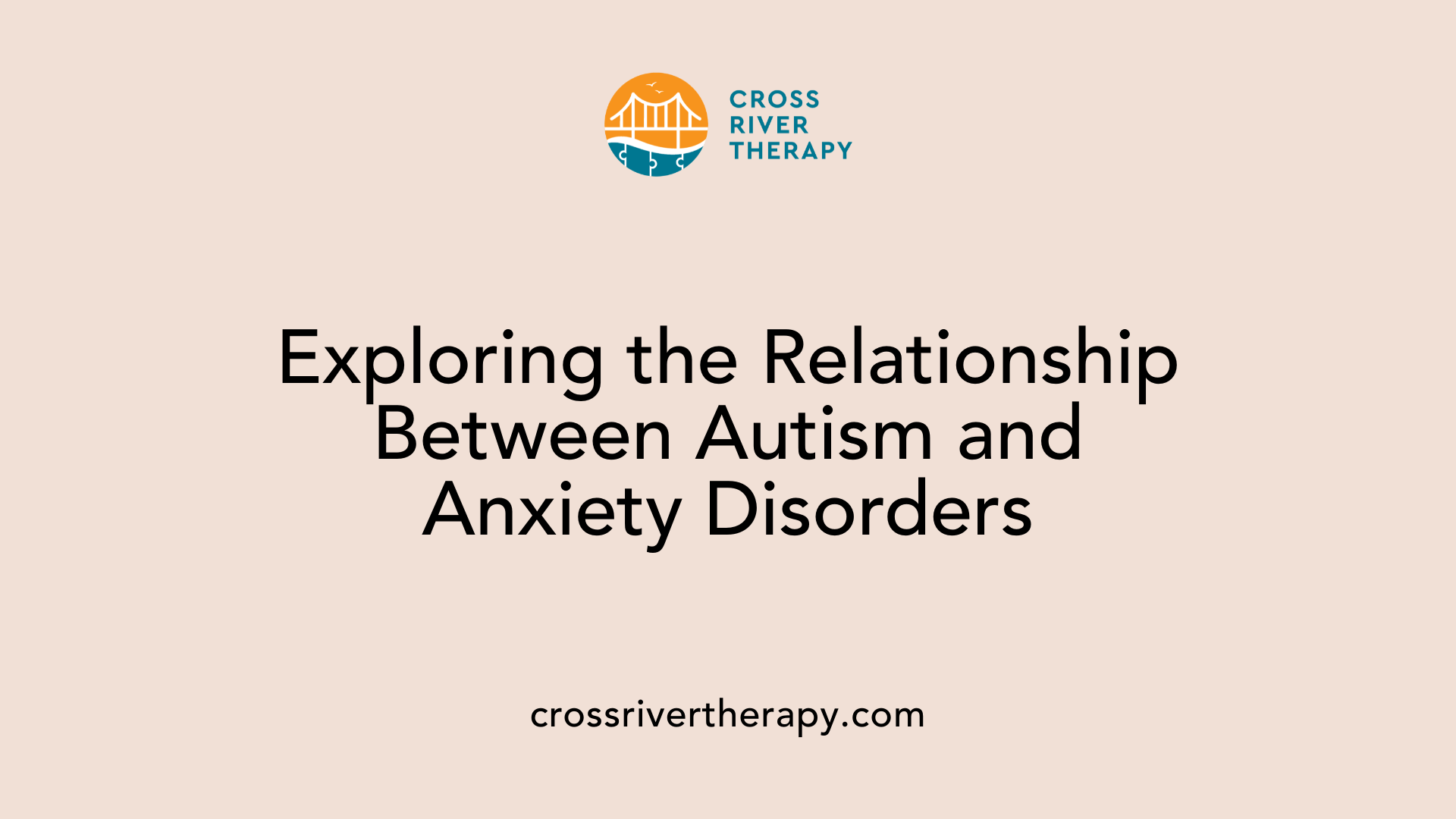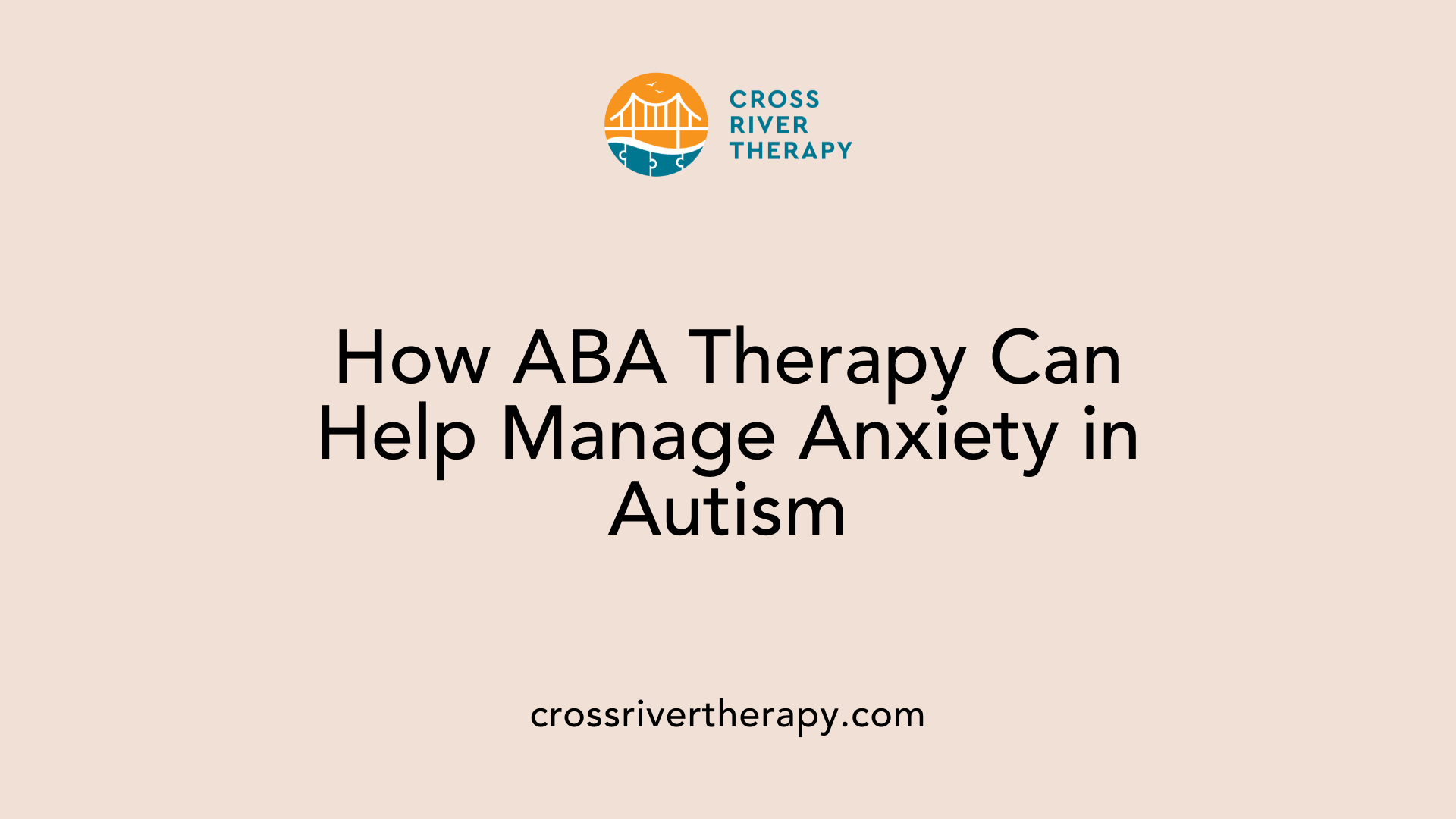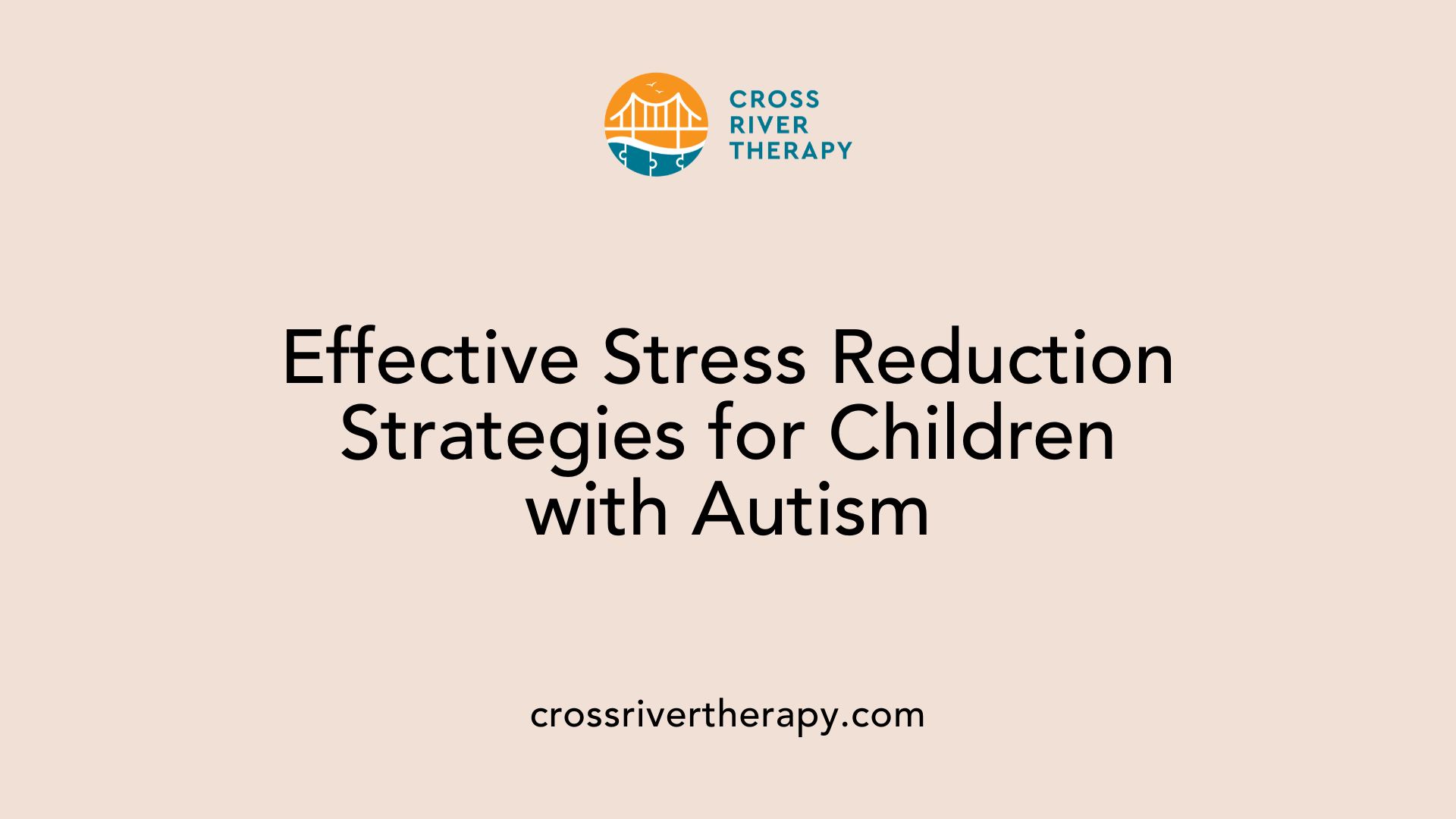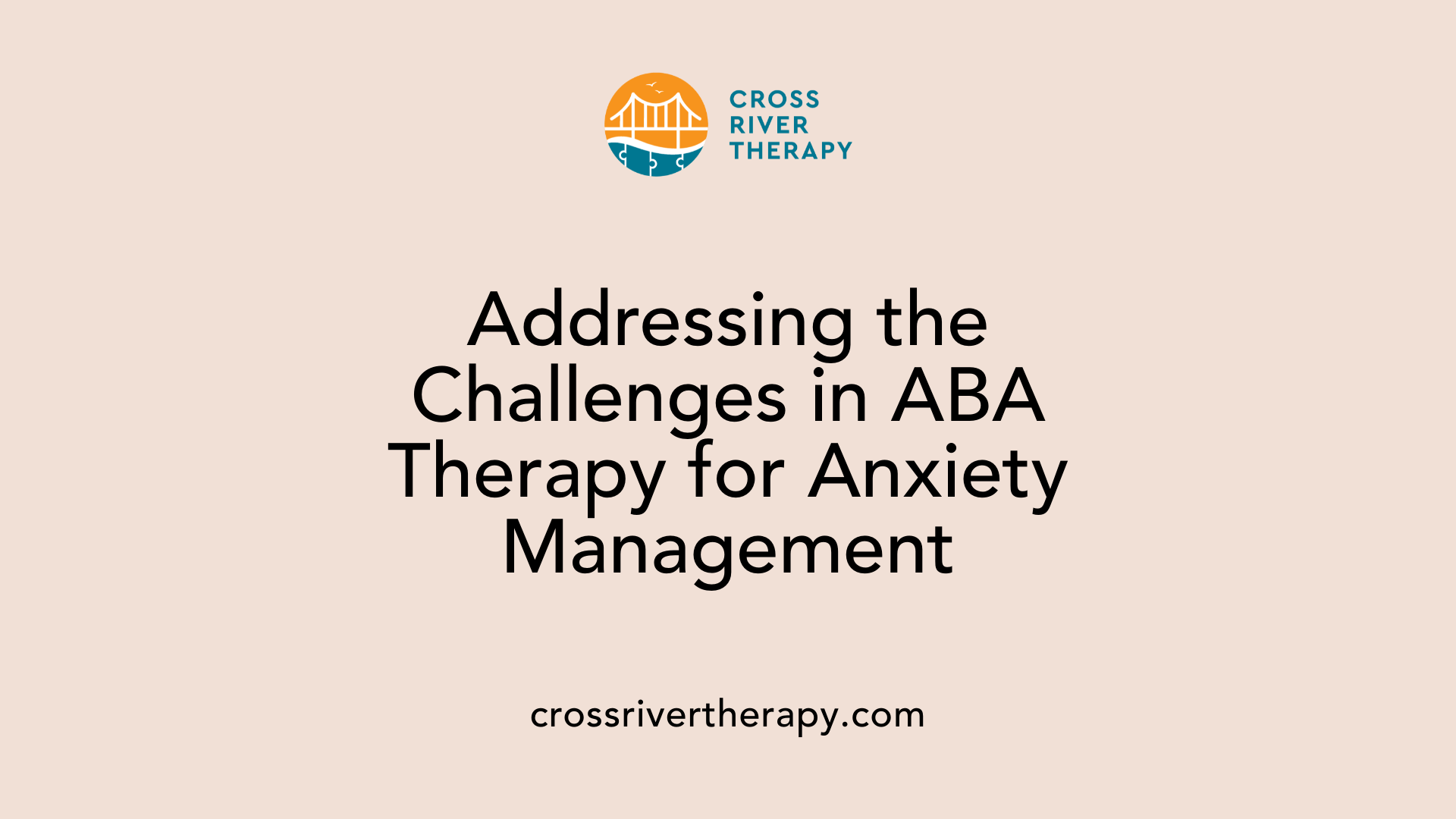Addressing Anxiety and Stress in Children with Autism through ABA Therapy
Reducing Anxiety in Children with Autism: The Role of ABA Therapy
Understanding the Anxiety-Autism Connection
Children with Autism Spectrum Disorder (ASD) often face heightened anxiety levels due to social and communication challenges tied to the core characteristics of autism. This anxiety can severely impact their quality of life, making it crucial for caregivers and professionals to find effective ways to manage these symptoms. Applied Behavior Analysis (ABA) therapy has emerged as a valuable tool in addressing anxiety and stress in children with ASD by focusing on behavioral strategies tailored to individual needs.
The Link Between Autism and Anxiety

What is the relationship between autism spectrum disorder (ASD) and anxiety?
The connection between autism spectrum disorder (ASD) and anxiety is notably strong, with anxiety disorders frequently observed among autistic individuals. Research indicates that nearly 40% of children and 50% of adults with ASD experience anxiety disorders. This relationship is complicated by the overlap of symptoms between anxiety and autism, making accurate diagnosis challenging.
Common manifestations of anxiety in children with autism include specific phobias, social anxiety, and generalized anxiety disorder. These symptoms can often blend with behavioral expressions of autism, such as repetitive behaviors or heightened sensitivities, leading to confusion in understanding the root cause of distress.
What factors contribute to anxiety in autistic individuals?
Several factors may escalate anxiety levels in individuals with ASD. These include:
- Sensory Sensitivities: Many individuals experience overwhelming responses to sensory stimuli, which can trigger stress and anxiety.
- Social Communication Difficulties: Navigating social situations can be particularly challenging for those on the autism spectrum, which may lead to fear and anxiety around potential misunderstandings or social missteps.
- Intolerance of Uncertainty: The need for predictability is pronounced in many autistic individuals; unexpected changes can cause significant distress.
The impact of anxiety in autistic children can affect their daily functioning and social interactions, resulting in withdrawal from peers and increased meltdowns. Thus, recognizing and addressing anxiety is vital in promoting better quality of life for individuals with ASD.
Understanding How ABA Therapy Addresses Anxiety

How can Applied Behavior Analysis (ABA) therapy help manage anxiety in children with autism?
Applied Behavior Analysis (ABA) therapy helps manage anxiety in children with autism by teaching them effective coping skills and strategies tailored to their individual needs. Many children with autism experience anxiety due to challenges in expressing their wants and needs, and ABA can enhance their communication abilities, which in turn reduces anxiety related to frustration and misunderstandings.
Through positive reinforcement, ABA therapy encourages the development of social skills and confidence. This helps children learn essential abilities like taking turns, asking for help, and engaging in interactions, further minimizing anxiety in social situations. The continuous positive feedback from therapists builds a child's self-esteem and sense of belonging, fostering healthy relationships and support systems.
ABA employs structured strategies such as routine building, visual supports, and social stories, making unexpected situations more predictable and reducing overall stress. Moreover, coping strategies, including mindfulness and deep breathing exercises, are also integrated, promoting emotional awareness and regulation.
Here's a summary of key techniques used in ABA therapy for anxiety management:
ABA therapy not only focuses on behavioral changes but also enhances focus and engagement in activities, providing a foundation for success in various settings, including educational and social environments. The comprehensive approach of ABA in managing anxiety emphasizes the importance of individualized strategies, ensuring children with autism receive tailored support that aligns with their unique experiences.
Implementing Effective Stress Reduction Strategies

What are effective strategies for reducing stress in children with autism?
To effectively address stress in children on the autism spectrum, implementing structured approaches is essential. One highly beneficial method is breaking down complex tasks into smaller, more manageable steps. This adjustment helps prevent feelings of overwhelm. Using techniques like 'first-then' statements can also clarify expectations, easing anxiety by providing a clear daily flow.
Creating Sensory-Friendly Environments
Moreover, creating sensory-friendly environments is crucial for stress management. Adjusting sensory inputs—such as dimming lights, minimizing noise, and incorporating calming colors—can result in more comfortable surroundings. Establishing specific areas in the home, like sensory rooms, filled with calming elements and tools, provides children with spaces to self-regulate when feelings of overwhelm arise.
Establishing Routines for Predictability
Another effective strategy is the establishment of structured daily routines. Predictability can significantly comfort children with autism, helping them manage their time and expectations better. Visual schedules and social stories enhance understanding of daily activities and transitions, ultimately reducing anxiety.
By integrating these strategies, caregivers can cultivate an environment that supports emotional regulation and stress management among children with autism, positively impacting their overall well-being.
Treatment Options Beyond ABA
What treatment options are available for anxiety in children with autism?
In managing anxiety among children on the autism spectrum, a variety of treatment options exist beyond Applied Behavior Analysis (ABA). One effective approach is Cognitive Behavioral Therapy (CBT), which helps children pinpoint their fears and challenges them through structured methods. This form of therapy is particularly valuable for children as it includes techniques like exposure therapy. Through this method, children are gradually introduced to anxiety-inducing situations, allowing them to build confidence and a sense of safety over time.
How effective are medications and behavioral interventions?
While there are currently no FDA-approved medications targeted solely at anxiety in autism, some medications, such as Selective Serotonin Reuptake Inhibitors (SSRIs), may be prescribed. However, the effectiveness of these medications varies greatly among individuals, and they often work best in conjunction with behavioral interventions. For higher-functioning individuals, these interventions can be tailored to support coping mechanisms and address anxiety symptoms more effectively.
How can special interests engage children and help manage anxiety?
Engagement through special interests can be a powerful tool in reducing anxiety for children with autism. By incorporating their passions into therapeutic activities, practitioners can enhance motivation and emotional engagement. Additionally, techniques that promote emotional literacy—such as identifying feelings and practicing positive reinforcement—can significantly bolster a child’s ability to cope with anxiety. These strategies help children better understand their emotional responses, leading to improved self-regulation and resilience.
Integrating ABA and CBT for Enhanced Anxiety Management
Combining ABA and CBT
Integrating Applied Behavior Analysis (ABA) with Cognitive Behavioral Therapy (CBT) offers a comprehensive approach to managing anxiety in children with autism spectrum disorder (ASD). ABA focuses on modifying behaviors through structured techniques, while CBT emphasizes understanding and changing thought patterns that lead to anxiety. This combination allows for a tailored intervention, addressing both behavioral and cognitive aspects of anxiety.
Benefits of Joint Approaches
Some of the key benefits of utilizing both ABA and CBT include:
- Individualized Care: Tailors interventions to each child's specific needs.
- Skill Development: Equips children with practical coping strategies for anxiety management.
- Family Involvement: Engages families in the therapeutic process, fostering support and consistency at home.
- Long-Term Effects: Promotes resilience, allowing children to adapt better to challenges and stressful situations.
Success Stories
Success stories of children benefiting from this combined approach illustrate its effectiveness. For instance, children who practiced safe exposure to social scenarios through CBT, while simultaneously learning coping strategies through ABA, reported lower levels of anxiety in social settings. Furthermore, by empowering parents with techniques from both disciplines, families can create supportive environments that reinforce lessons learned in therapy, subsequently reducing anxiety-provoking behaviors.
Family Involvement and Education
Family Roles in Managing Anxiety
Family members play a significant role in supporting children with autism spectrum disorder (ASD) in managing anxiety. They can help by recognizing anxiety triggers and collaborating with therapists to implement consistent strategies at home. Parents and caregivers can reinforce skills learned in therapy, such as coping mechanisms and communication techniques, and provide emotional support during challenging situations.
Educational Tools and Techniques
Utilizing visual aids, social stories, and structured routines can greatly benefit children with ASD in educational settings. These tools offer predictability, which reduces anxiety in new or overwhelming situations. Teachers and support staff can also implement mindfulness techniques like deep breathing exercises to help create a calmer classroom environment.
Impact of Shared Success Stories
Sharing success stories within the community can empower families and individuals facing similar challenges. These narratives provide hope and insight into the benefits of therapeutic interventions like ABA therapy, showcasing effective strategies and the positive outcomes that can arise from family involvement. This collective knowledge aids in diminishing the feeling of isolation, fostering a supportive network for those navigating anxiety management together.
ABA Techniques for Social Skills and Anxiety Reduction
Social skills training through ABA
Applied Behavior Analysis (ABA) offers targeted social skills training aimed at children with autism. This includes direct instruction in communication and interaction techniques, helping them navigate social environments with greater ease. By fostering these essential skills, ABA aids children in expressing themselves more effectively, thereby alleviating social anxiety.
Reducing social isolation
Improving social skills isn't just about individual interactions; it also fosters connections with peers. ABA therapy encourages collaborative play and teamwork, which can reduce feelings of loneliness. Children learn to engage in group activities that promote inclusion, ultimately reducing social isolation.
Building relationships
The communication strategies taught through ABA help children with autism build meaningful relationships. By equipping them with tools for initiating conversations and understanding social cues, ABA empowers children to form friendships. This relational growth is crucial for their emotional well-being, directly countering the stress and anxiety often felt in unfamiliar social situations.
Challenges and Future Directions

Accessibility of ABA Therapy
One of the significant challenges in implementing Applied Behavior Analysis (ABA) therapy for anxiety management in children on the autism spectrum is accessibility. Many families face barriers such as geographic limitations, financial constraints, and varying availability of trained professionals in their area. This lack of access can prevent children from receiving timely and essential support that could help them navigate anxiety effectively.
Challenges in ABA Implementation
The variability in therapist training poses another hurdle. While ABA techniques are structured and evidence-based, not all practitioners have the same level of expertise in addressing anxiety-related issues. This inconsistency can lead to varying outcomes for children, creating a pressing need for standardized training focusing specifically on anxiety interventions.
Trained Therapists for Specific Interventions
Choosing the right ABA therapist is crucial for effective treatment. Therapists should not only be experienced in general ABA methods but also possess specialized knowledge in techniques that specifically target anxiety management in children with autism. Having skilled professionals can enhance the quality of care, ensuring that therapies are tailored to individual needs and promoting better coping strategies.
By addressing these challenges, ongoing research and professional development can lead to improved access and more effective ABA therapy implementations.
A Holistic Approach for Autism and Anxiety
Comprehensive support through ABA therapy and additional interventions like CBT are crucial in managing anxiety and stress for children with autism. By focusing on individualized needs, enhancing social and communication skills, and encouraging family involvement, these methods offer a significant pathway towards improved mental health and quality of life. Continued research and education are essential to overcome challenges and make effective treatment more accessible for all children with autism.
References
- Autism and Anxiety: Treatment Options and ABA Techniques
- ABA Therapy's Role in Managing Autism-Related Stress
- Addressing Anxiety & Stress in Children with ASD: Coping ...
- treatment of anxiety in individuals with autism spectrum disorders
- Benefits of ABA Therapy for Children with Autism and Anxiety - MySpot
- Tips for Reducing Stress in Children with Autism | Sheppard Pratt
- Autism and Anxiety - Autism Research Institute



